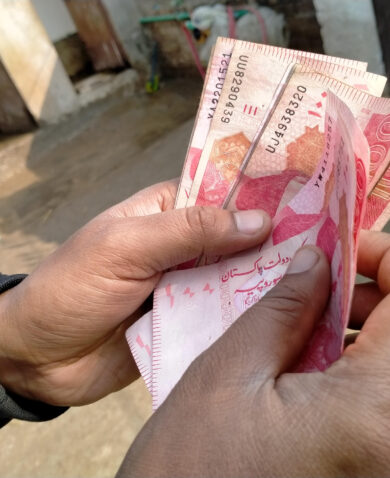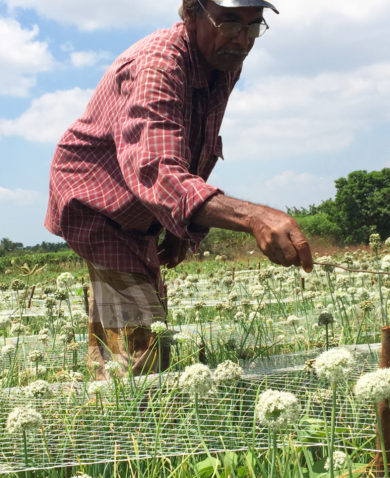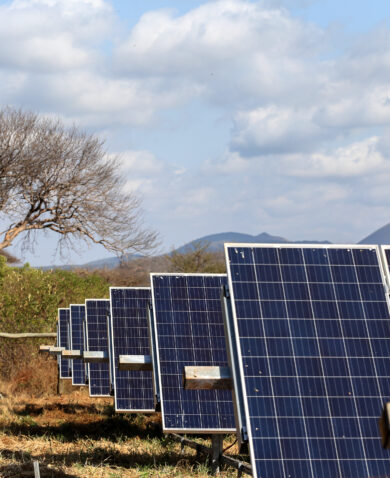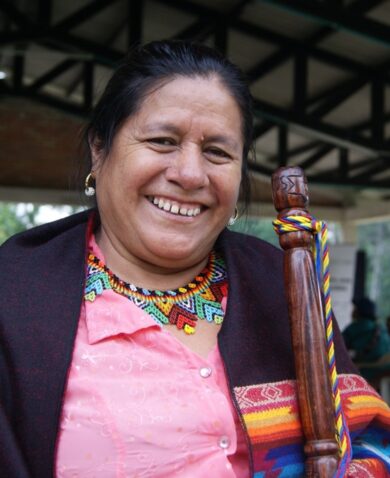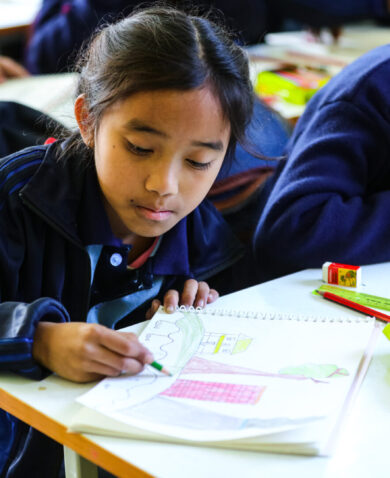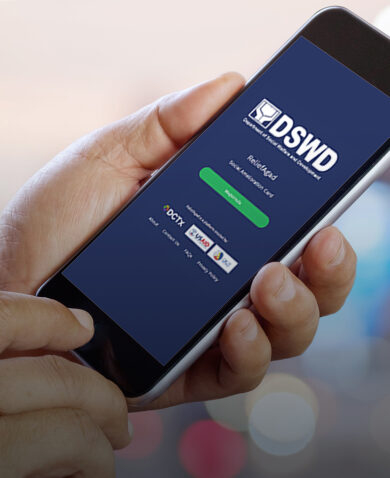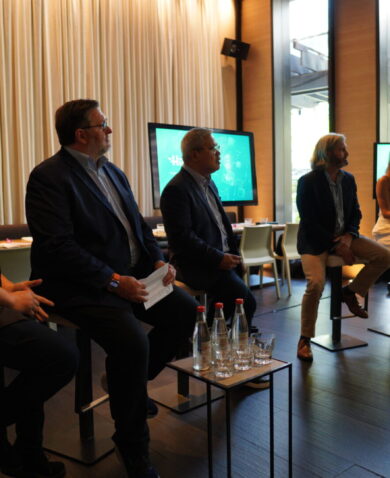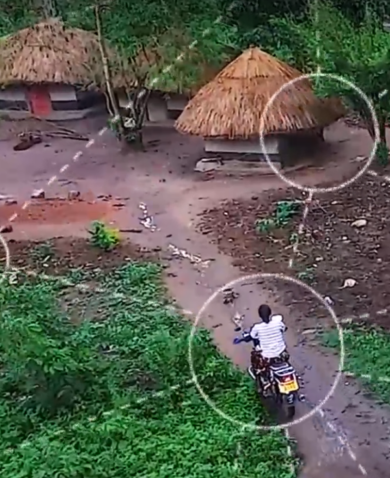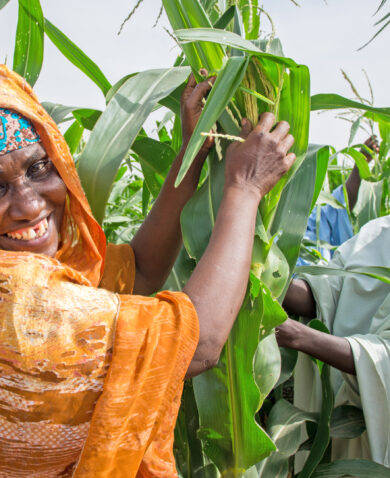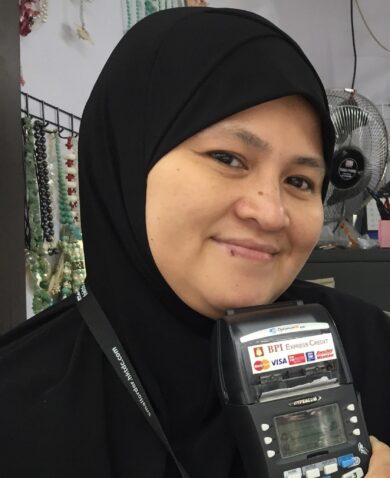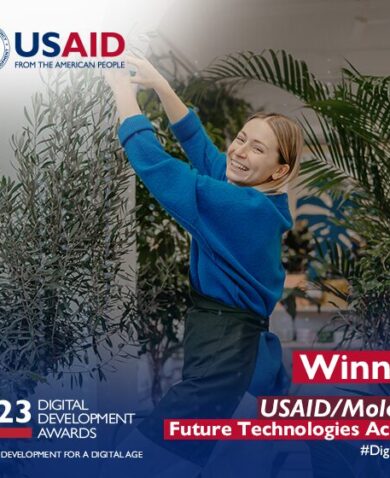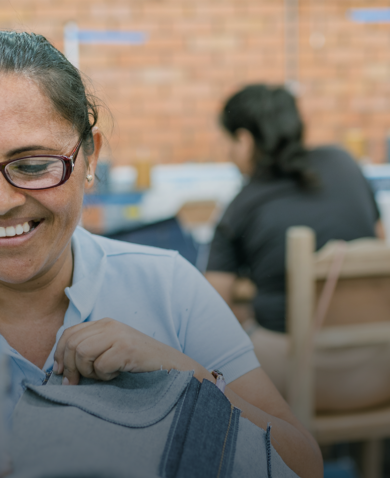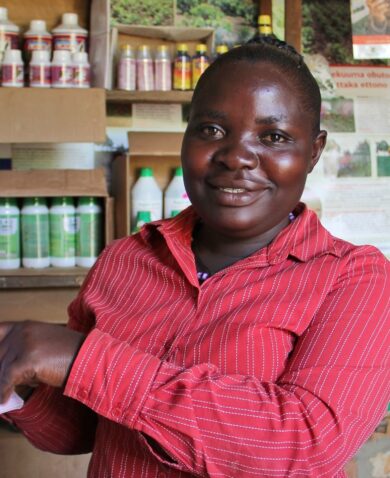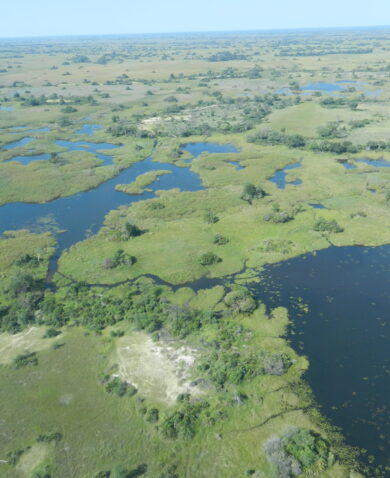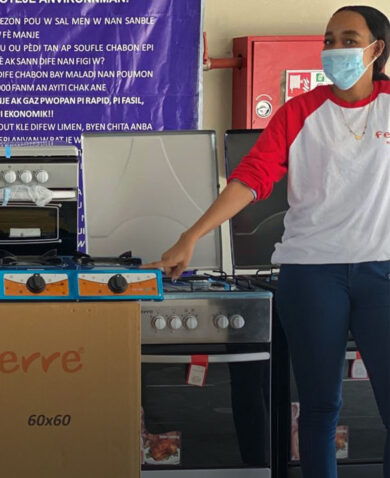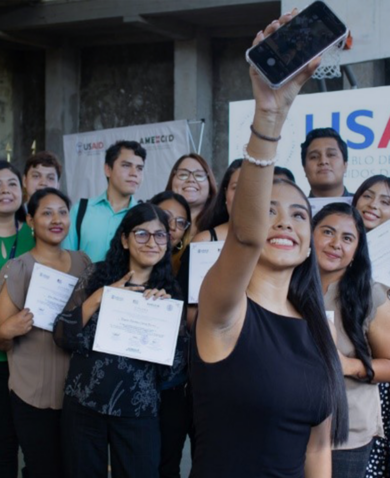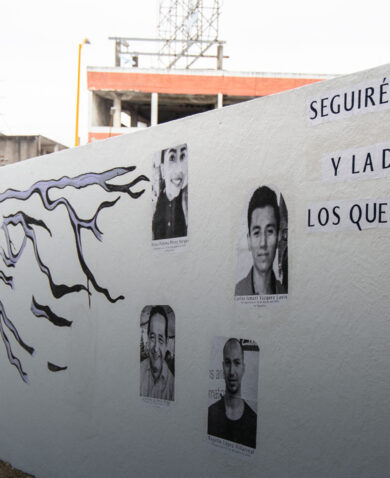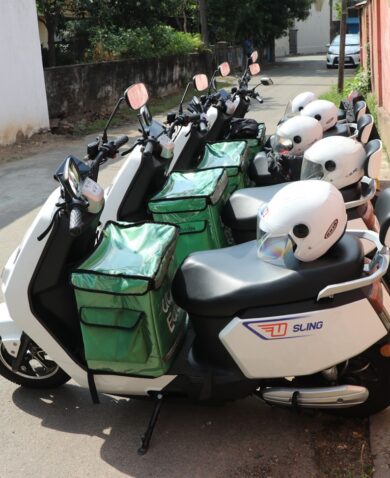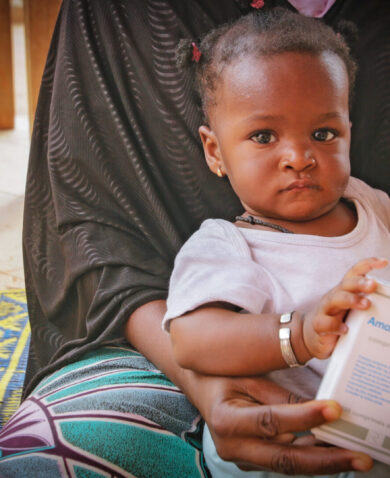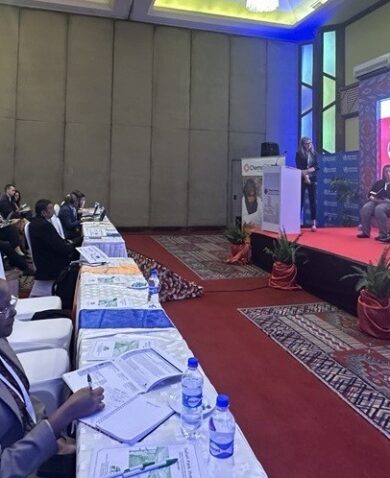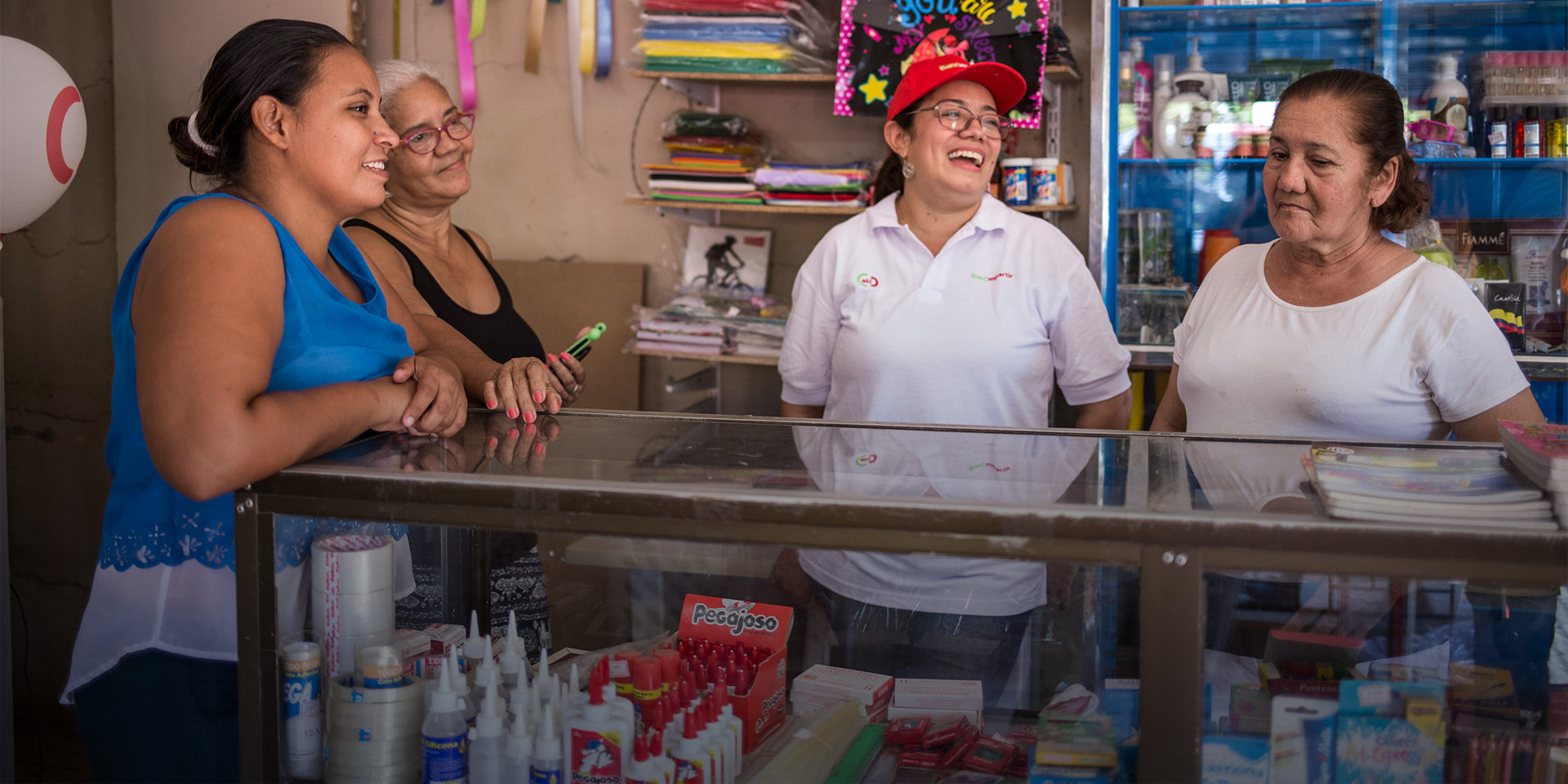
Building a Financial Services Market Where There Wasn’t One
April 2, 2020 | 5 Minute ReadHow did one USAID initiative get banks on board to provide $1 billion in services in rural Colombia? How can we do that elsewhere? It takes a systemic, business-driven approach to connect supply with demand at scale.
Emerging economies such as Colombia, Philippines, and South Africa offer sophisticated financial sectors that historically failed to reach marginalized groups. In Colombia specifically, this left rural areas largely unbanked and excluded from the broader economy, after decades of war. In four years, USAID/Colombia’s Rural Finance Initiative (RFI) — implemented by Chemonics — has linked more than 750,000 rural clients, half of them women, with $999 million in credit and other financial services, in areas still marked by violence and narcotrafficking. How did our RFI team do this with just a $22 million USAID budget, and how can we apply these lessons to bank the unbanked elsewhere?
Global development practitioners frequently start by working with rural smallholders or urban microentrepreneurs to build capacity to sell their goods to higher value markets and access credit as a means to do so. They encounter frustration that banks won’t adjust collateral requirements and interest rates, or they find limited success helping banks design a niche product for these customers. Instead, the Colombia RFI started on the supply side of financial services, with the banks. We mobilized our first billion by taking a systemic and business-driven approach, engaging the whole financial sector and rural economy to help banks and customers work together for mutual profit.
Target the whole rural pyramid along economic corridors
Many donor projects target smallholders in rural towns that are selected based on need or host-government priorities. However, banks don’t see business limited by municipal boundaries, but instead look to serve broader geographic areas with enough clients to make service cost-effective. RFI’s approach to working along economic corridors allows the project and banks to take advantage of economies of scale, serving towns connected by roads to a hub city that houses buyers, exporters, banks and other value chain services, like input suppliers. In places like Peru, Bolivia, Nigeria, and Jordan, Chemonics has helped USAID strengthen local businesses with an economic corridors approach. RFI is perhaps one of the first projects to do so exclusively in financial services. Using economic corridors makes rural expansion more profitable for banks than serving just the most rural and conflict-ridden municipalities, which are the most costly and risky. Banks lack means to assess and manage risk for smallholders, who lack credit history and collateral, and it’s expensive to serve clients who are scattered across large areas. Therefore, RFI has helped financial institutions target the whole rural pyramid — including medium and large businesses, not just smallholders. This is more profitable for banks and allows them to serve rural regions sustainably. This also strengthens nascent value chain relationships among smallholders, processors, and buyers along economic corridors, which grows the rural economy.
Partner with a mix of banks, big and small
Many donor projects focus on microfinance institutions (MFIs) to reach target rural populations. Traditionally MFIs and NGOs are more geared for smallholder needs based on their social mission. They fulfill an important role in banking the unbanked, but they face limitations because they cannot offer the range of services or higher-value loans needed for small and medium enterprises. When donor projects try to get larger banks on board to serve smallholders, it’s like running into a brick wall of high interest rates, collateral requirements, and paperwork that feels insurmountable for informal enterprises. To reach the whole rural pyramid from smallholders to anchor firms with credit and savings, RFI has found the key is working with a range of financial institutions from multinational banks to MFIs and local cooperatives. Big banks like Latin American giant Davivienda and Colombia’s Banco de Bogota have generated high dollar value results while niche microfinance banks and Colombia’s broad network of financial cooperatives helped reach higher numbers within our 750,000 clients.
Find incentives to get banks to sign on
The main incentive for banks must be the profitable business opportunity itself, which we help them realize by reducing cost and risk. However, donor projects can provide a small nudge by paying a portion of operations costs to open new branches or test new products, methods, or digital technologies. RFI does this via our $7 million grants fund, which has leveraged $30 million in the banks’ own funds. We use these incentives to buy down risk for banks to enter underserved rural areas or to test and scale new innovations. Banks have out-spent us 4:1 in some of Colombia’s most conflict-ridden areas drawn by the ability to expand their market. You don’t need grants to leverage private investment, however; donors can design incentives through other funding mechanisms, specialized technical assistance, or infrastructure to lower barriers to entry.
For example, on the other side of the world, Chemonics’ work for the USAID E-PESO activity engages banks through financial industry associations and incentivizes them to adopt e-payments by strengthening the payment ecosystem infrastructure, lowering entry barriers so that banks see return on their own investments more quickly. Along with policy adjustments, this allowed E-PESO to add 2.1 million new e-payment users and meet the government’s target of e-payments accounting for 10 percent of all retail transactions nationwide, up from just 1 percent at program inception. In Philippines, Colombia, and globally, we have seen that the low cost of digital financial services shows potential to bank the unbanked by reducing use of cash, which in turn reduces the cost of reaching remote populations and the security risk of cash. In a promising example from Colombia, RFI recently helped an MFI test a digital loan, which mobilized $950,000 in credit for 985 rural clients in just nine months.
Re-design the bank’s business model
Rather than appealing to banks’ better nature or corporate social responsibility, we have achieved results from the Philippines to Colombia by taking a business-driven approach to lower risk and transaction cost for bank and client alike, so that everyone makes money. Donors frequently fear that smallholders can’t or won’t pay “high” market interest rates, but experience in Colombia and around the globe shows they can and do when we help banks reduce transaction costs and risks. In Colombia, interest rates can be up to 30 percent annually, but farmers can lose that amount of money if they have to miss time in the fields and shell out bus fare to a city to repay a small loan each month. RFI doesn’t impose our own products or methods but instead helps each bank redesign its business model for serving rural clients (i.e., portfolio, policies, and processes). This means helping banks streamline loan origination to reduce time and cost, using tailored risk assessment methods for smallholders who lack credit history, and changing requirements to accept “information collateral” (e.g., client’s community or business history and references) rather than land collateral. The best risk reduction is a product designed for the given client — such as a loan for which re-payment is tied to the harvest, ensuring both client and bank can succeed. We also help banks make targeted use of USAID’s Development Credit Authority loan guarantee to buy down risk for an initial loan, with the client frequently qualifying for a second loan without the guarantee. RFI also helps banks reach clients at scale by using value chain finance to bundle smallholders. Redesigning service delivery channels significantly reduces cost and time to reach scattered rural clients, through mini-branches, banking agents, roving credit officials that visit villages on motorcycles, a traveling bank branch in a bus, community members referring new clients, and digital solutions that reach rural clients on their mobile phones.
Where next?
Looking ahead, how can the financial sector, donors, and government build on these lessons to drive financial inclusion for Colombia’s 49 million citizens and other rural communities across the world? Digital solutions, such as those we’ve started implementing in Colombia and the Philippines, arguably become the next frontier to drive inclusion at scale by reducing cost. While development practitioners must develop strategy for each country context, it is clear that a systemic and business-driven approach can be highly effective in banking the unbanked and building an inclusive financial services market, giving both banks and marginalized customers more bang for their buck.
Check out this technical brief to learn more about how Colombia RFI achieved this success.
Posts on the blog represent the views of the authors and do not necessarily represent the views of Chemonics.


